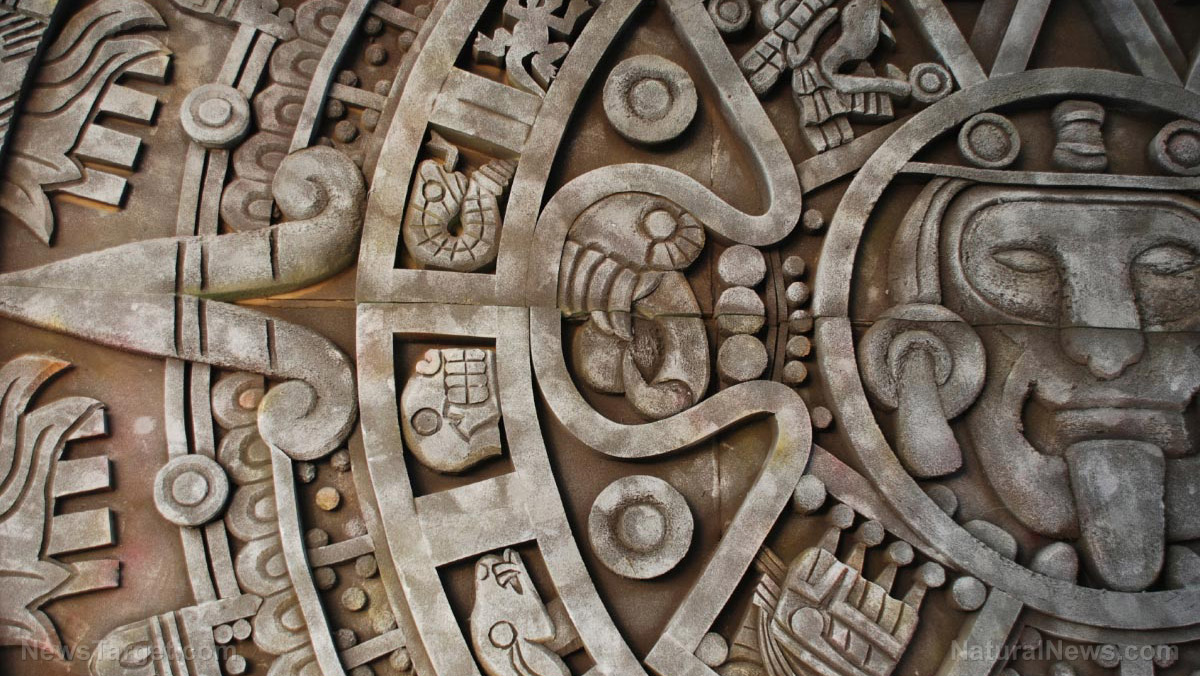Archaeologists discover boat-shaped mound that could be NOAH’S ARK in Turkish ruins
11/09/2023 / By Zoey Sky

A team of archaeologists reported that they may have stumbled upon the resting place of Noah’s Ark.
The archaeologists excavating a geological formation in Turkey have aged rock and soil samples that they think contain ruins of the ark. The project began in 2021 and is still ongoing.
Initial analysis has revealed that the samples contain “clayey and marine materials and seafood.” The research team believes that these results suggest that human activity was present on the boat-shaped mound between 5,500 and 3,000 BC.
According to the Bible, Noah’s Ark settled on the “mountains of Ararat” in Turkey after a flood that lasted 150 days drowned the Earth and every living thing on it that wasn’t aboard the ark.
The geological formation located in the Dogubayazit district of Agri has been a potential site since it was discovered in 1956. Mount Ararat is the highest peak in Turkey, standing 16,500 feet tall and in the same shape as an ark would be.
Noah’s Ark was said to measure “300 cubits, 50 cubits, by 30 cubits.” which translates to up to 515 feet long, 86 feet wide and 52 feet high.
A team of researchers led by Istanbul Technical University (ITU), Agri Ibrahim Cecen University (AICU) and Andrew University have been working at the site for nearly one year. The researchers are collecting samples that they think could hold the key to confirming the Biblical story.
The ruins, which allegedly belong to “Noah’s Ark,” were discovered by expert cartographer Captain Ilhan Durupinar in 1959 in the land between Telceker and Uzengili villages of Dogubayazit.
The ruins have attracted the attention of both local and foreign tourists. (Related: Ancient tablet discovered on Mount Ebal in Nablus precedes known Hebrew inscriptions.)
Giant fissures have formed in the ruins, which are under increasing threat of landslides every year.
The “Mount Ararat and Noah’s Ark Research Team” was established in cooperation between AICU and ITU for scientific research on the ruins, whose structure was damaged due to several landslides.
The team formed within the scope of the academic cooperation protocol conducted its first study in the region in December 2022.
The group, which is made up of academics who specialize in geophysics, chemistry and geoarchaeology research, gathered at least 30 samples, including soil and rock fragments during their investigations in the region. The samples gathered from the remains were sent to ITU laboratories for closer examination.
AICU Vice Rector Professor Faruk Kaya said that based on the first findings that the team obtained from the studies, there have been signs of human activities in the region “since the Chalcolithic period between the years 5500 and 3000 BC.”
Experts know that the flood of Prophet Noah went back at least 5,000 years. Kaya added that in terms of dating, there is proof of life in this region, which was revealed in the laboratory results.
However, Kaya added that it is not possible to say that the ship is at the site with the dating and that the archaeological team will need more time to find out more information.
Expert claims Mount Ararat is the wrong location
Dr. Andrew Snelling, an Earth creationist with a Ph.D. from the University of Sydney, has previously said that Mount Ararat could not be the ark’s location because the mountain did not form until after the flood waters receded.
While the flood is considered a historical event, most scholars and archaeologists do not believe in literally interpreting the Ark story.
According to the Bible, God commanded Noah to build an enormous ark that could save himself, his family and a representation of all the world’s animals.
The wickedness and corruption of man resulted in God’s vows to send a great cleansing flood. Because God deemed Noah to be the only righteous man worth saving, he commanded him to build the ark.
The book of Genesis stated that when Noah completed his task, God sent “two of every sort” of animal to the ark. The flood waters rose until all mountains were covered, and life, except fish, was destroyed.
Learn about other fascinating discoveries at Artifacts.news.
Watch the video below to learn more about the hidden history discovered in ancient architecture.
This video is from the What is happening channel on Brighteon.com.
More related stories:
30-foot-long secret corridor discovered in Great Pyramid of Giza.
Archaeologists discover ruins of Mayan civilization in Guatemala using LiDAR technology.
Amateur archaeologist decodes messages hidden in cave art inscriptions.
Sources include:
Submit a correction >>
Tagged Under:
ancient history, ancients, archaeology, artifacts, Bible, biblical flood, breakthrough, discoveries, Dogubayazit, Great Flood, Hidden History, Mount Ararat, Noah's Ark, real history, real investigations, research, turkey
This article may contain statements that reflect the opinion of the author
RECENT NEWS & ARTICLES
COPYRIGHT © 2023 HiddenHistory.news
All content posted on this site is protected under Free Speech. HiddenHistory.news is not responsible for content written by contributing authors. The information on this site is provided for educational and entertainment purposes only. It is not intended as a substitute for professional advice of any kind. HiddenHistory.news assumes no responsibility for the use or misuse of this material. All trademarks, registered trademarks and service marks mentioned on this site are the property of their respective owners.




















